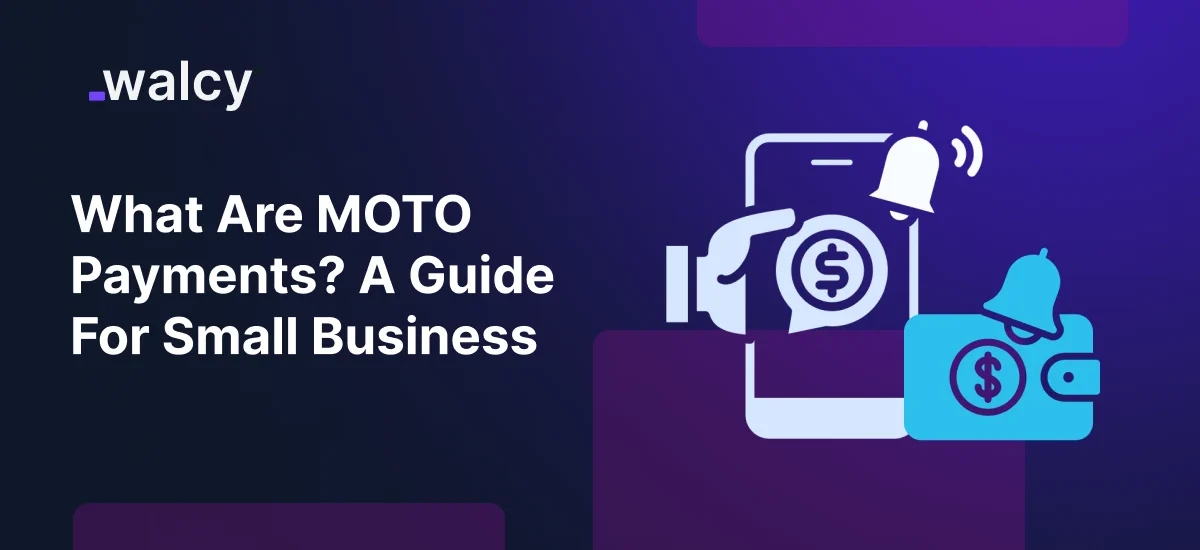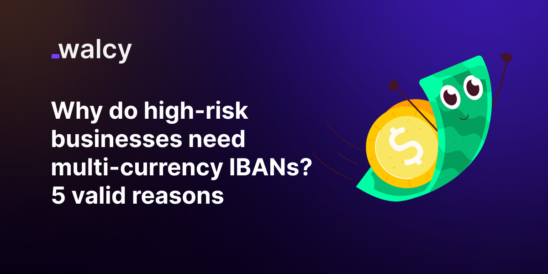Payments are the means of transforming one business into another because they mean evolution in payments among customers.
An example different from the other modern payment types is MOTO payments, that is Mail Order/Telephone Order payments.
Though e-commerce and online pay portals are becoming an increasingly popular form of payment, MOTO remains essential for many businesses, especially those that are small enough to conduct business remotely or are not able to meet customers face-to-face.
In this exciting guide, MOTO payments will be defined, the various ways they’ll benefit small businesses, how they work, and how easily these businesses can get started accepting them.
By the end of the article, you will know what makes MOTO payments to be more than just history’s past but rather prove to be beneficial for your business.
What Are MOTO Payments?
MOTO payments are the transactions contesting a customer providing his or her payment details, usually credit or debit card details, through the phone, mail, e-mail, or fax, instead of an in-person visit.
Mainly, MOTO payments are phenomenally used by companies like mobile carriers or any other service provider that solely works with or does not have a place on which customers come to spend their money.
Some examples of such businesses include:
- E-commerce stores
- Telemarketing companies
- Subscription-based services
- Travel agencies
- Food delivery services
- Charities and non-profit entities
MOTO payments are classified as card-not-present (CNP) transactions as they do not involve swiping, dipping, or tapping the physical card during payment; instead, they involve manual entry of the customers’ card details into the payment terminal or software.
How Do MOTO Payments Work?
Such things, a one-stop shop for MOTO payments, would have a very simple process as far as making these payments is concerned, involving various steps to ensure such transactions are completely safe and businesslike.
Here is a detailed description of how it works.
-
Customer Provides Payment Details
The customer shares his/her payment details of the merchant offering the telephone service with the card number, expiration date, and CVV code, and allows billing address details.
The customer does this because this entire step must be considered as the merchant on the other end is expecting to have all the numbers correctly entered so that there isn’t an error.
-
Merchant Enters Payment Information
Merchants will enter the customer’s card data in the payment terminal, virtual terminal, or payment gateway. This is a very delicate step in which errors can happen using wrong information and cause transactions to be declined.
-
Payment Authorization
The bank (or payment processor) validates the transaction by checking card details, available funds, or fraud risk. In case the transaction is approved, the bank sends an authorization code to the merchant.
-
Funds Transfer
After being authorized, the amount will be transferred from the customer of the merchant account. This may take about 1 to 3 business days depending on the payment processing and banking institution.
-
Finalization
The merchant has to confirm the payment to the customer; this can be by sending an email, making a call, or any other means of communication. It ensures that the customer is aware of the occurrence and can remedy any issues, if necessary.
Example of a MOTO Transaction
To understand MOTO as a greater concept, it is helpful to present a real-life example in the following way:
A customer wants a bouquet delivered on a certain date, the customer calls up the flower shop,
Payment process:
– The customer will provide the necessary credit card information by calling, and then
– The florist enters the customer’s card information into the payment terminal.
– In a very traditional sense, as opposed to skyscrapers and online websites, this delivers the product, and charges the customer’s card, with the tech of authorization fully being there.
Dynamically, this is how the MOTO payment would process for a business that allows such without having the customer physically enter an outlet or online platform to pay.
Read about: How Credit Card Transaction Processing Works? A Quick Guide
Benefits to Small Businesses from MOTO Payments
There are lots of benefits that can be provided to small types of businesses, often those that carry out their business at a complete distance or via phone and online orders. Here are some key insights:
-
Customer Convenience
With MOTO payment services, a customer can buy without having to go to a shop. Naturally, for most people who are busy or cannot do their shopping and prefer not to do it via shop but through phone or other means, this can lead to higher satisfaction and retention.
-
Reach Customers outside Your Reach
MOTO payments serve customers who are not local area customers or simply do not want to shop online. Perhaps these customers are mostly senior citizens or people who do not have Internet access. Serving this category of customers expands the range, while more and more sales will lead to more revenues.
-
Increased Sales Opportunities
MOTO payments allow one to accept orders twenty-four hours a day and seven days a week. With this flexibility, you would attract more customers and, hence, higher sales and better customer satisfaction.
-
Wide applications
MOTO payments cover a very wide range of types of business-like retail, hospitality, and service. They would become a real tool for any kind of business.
-
Economically Viable
The establishment of the MOTO payment processing is generally less expensive compared to investing in conventional point-of-sale systems, thus making it economical for small businesses. Moreover, most of the payment processors charge competitive prices on MOTO transactions.
-
Enriched Cash Flow
Fast processing of MOTO payments involves fund transfer from an account to a merchant account straight away. Such immediacy is vital for small businesses that rely strictly on the appropriateness of such payments to run their daily activities.
How to Accept MOTO Payments for Your Business
If you’re a small business owner looking to accept MOTO payments, here are some steps you need to take:
-
Choose a Payment Processor
Pick a payment processor that accepts MOTO. Some popular ones today include PayPal, Stripe, Square, and Authorize.Net. Compare fees, features, and even customer support to find the best fit for your business.
-
Virtual Terminal Set-Up
A virtual terminal refers to a web-based tool through which manually inputting customer payment information can be made. Most payment processors provide virtual terminals within their services. Your virtual terminal should be user-friendly and secure for all such payments.
-
Make PCI Compliance a Must
For MOTO payments, the sensitive card information is attachable; thus, your business should comply with the Payment Card Industry Data Security Standard (PCI DSS), which mandates storage encryption, secure networking, and periodic updating of security measures.
-
Train Your Staff
Your employees must know very much about how to take customer payments securely and conduct MOTO transactions. They should know that they’re made privy to PCI compliance and such potential frauds.
-
Market MOTO Payment Options
Advertise to your customers that MOTO payment is available through your website, social media platforms, and other marketing materials. By so doing, you encourage using this payment system by emphasizing its convenience and security.
Read about: Payment Services Directive; PSD3: All You Need to Know.
Security Considerations for MOTO Payments
However, MOTO payments entail many advantages since they have associated risks in the card-not-present category of transactions. Here is how to mitigate the above risks:
-
Ensure Communication Security
Payment information must never be collected by insecure means, such as e-mail or fax. Instead, consider encrypted phone systems or secure online forms.
-
Tokenization
Tokenization replaces sensitive card details with a unique token, reducing the risk of data breaches. This guarantees that the token cannot be used to access the original payment details, even if it is intercepted.
-
Understand Fraud Detection
Detect potential fraud activity using tools developed for fraud detection for the particular account. Basic examples include huge inside orders or an incongruence of billing information. Review transaction logs regularly for any suspicious activities.
-
Keep Data Storage to a Minimum
Store customer payment information only when necessary. If data has to be stored, ensure it is not only encrypted but also stored in a safe environment.
-
Update Security Configurations Regularly
Keep that software and security protocols up to date against the latest threats. Regularly review and update your internal policies regarding security measures to remain compliant with the standards of the industry.
Read about: Major Types of Payment Fraud and How to Avoid Them?
MOTO Processing Charges
MOTO payments tend to have higher processing fees when compared to card-present transactions due to the higher risk of fraud involved. These fees might include:
- Transaction fee: a percentage of every transaction (e.g., 2.9% + 30 cents).
- Monthly Fees: Some payment processors charge monthly fees to gain access to virtual terminals, among other things.
- Chargebacks: In the case where a customer raises a dispute on the transaction, you will incur charges.
The best route to minimizing your costs is to compare payment processors and choose one with the best rates for MOTO payments.
Read about: How Payment Processing Works? Best Payment Processor.
Industries Most Benefiting from MOTO Payments
MOTO payments have been of great value for businesses that fall under the following industries:
-
E-commerce
Thus, online retailers can use MOTO payments to accept orders from customers who want to give their credit card numbers over the phone.
-
Travel and Hospitality
Customers can schedule appointments and make reservations with travel agencies and hotels through the phone or via email.
-
Food Delivery
Restaurants and food delivery outlets can then take orders and make payments via the telephone.
-
Subscription Services
Recurring billing is made possible with MOTO payments by businesses that provide subscription services.
-
Charities and Non-Profits
Nonprofits can collect donations via phone or through mail.
Future of MOTO Payments
MOTO payments have been available for many years, but they evolve with the changing times brought by technology. Following are some trends that are changing the future of MOTO payments:
- Integration into Digital Wallets
MOST increasingly being used in mobile wallets like Apple Pay, Google Pay, etc., brings even more payment options.
- Security Improvements
Much more advanced protection for MOTO payments has emerged with biometric authentication and artificial intelligence fraud detection.
- Automation
Automated systems will facilitate MOTO payments instead of manual data input.
- Worldwide Outreach
As businesses go into the global market, MOTO payments are increasingly favored for such cross-border transactions.
Read about: The Best Digital Wallets in India: Everything You Need to Know.
Conclusion
For small businesses that work mainly from home or get their orders via phone or mail, MOTO payments are a great tool.
This is a very convenient and flexible payment solution for consumers and can increase the size of the customer base, boost revenues, and improve cash flow.
However, protecting customer data and fraud prevention is fundamental, so security and compliance should come first.
So if you are a small business owner wanting to pay MOTO, you start with a reliable payment processor, a virtual terminal, and marketing this payment option to customers.
MOTO payments help a business thrive in today’s market with the right tools and practices.
From e-commerce businesses to travel agencies and subscription services, it has become an effective and feasible medium in answering the needs of customers and growing business activities.
Do follow us on Facebook and LinkedIn, to stay connected with us.



